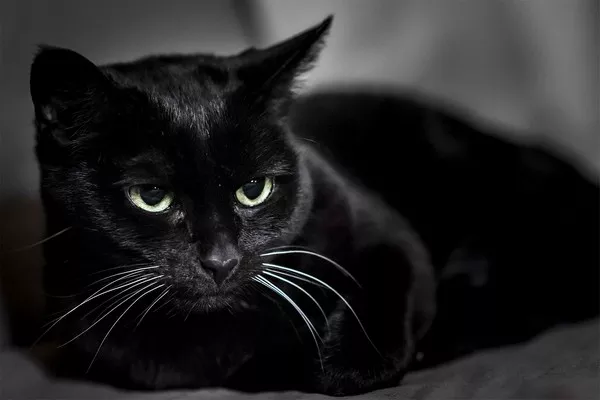A cat‘s ability to urinate freely is essential for their overall health and well-being. However, urinary blockages are a severe and potentially life-threatening condition that can affect cats. In this comprehensive guide, we will explore the signs and symptoms of urinary blockages in cats, the potential causes, and what steps to take if you suspect your feline friend is experiencing this critical medical emergency.
Understanding Urinary Blockages in Cats
A urinary blockage, also known as feline lower urinary tract disease (FLUTD), occurs when there is an obstruction that prevents or severely restricts the flow of urine from the bladder through the urethra. This blockage can be due to various factors, including urinary crystals, stones, mucus, blood clots, or a combination of these.
Urinary blockages are more common in male cats than females due to their narrower and longer urethra. These blockages can lead to a buildup of toxins and waste products in the cat’s body, which can be life-threatening within a short time if left untreated.
Recognizing the Signs of Urinary Blockages in Cats
Recognizing the signs and symptoms of a urinary blockage is crucial for timely intervention. While not all cats will display every symptom, common signs of urinary blockages in cats include:
Frequent Attempts to Urinate: A cat with a urinary blockage may repeatedly visit the litter box or attempt to urinate without producing any urine. This behavior can sometimes be mistaken for constipation.
Straining to Urinate: Cats with urinary blockages often exhibit visible discomfort and straining when trying to urinate. You may notice them hunching over the litter box and making repeated efforts.
Crying or Yowling: Due to the pain and distress caused by the blockage, cats may vocalize loudly, crying or yowling when attempting to urinate.
Blood in Urine: If you notice blood in your cat’s urine or pink-tinged urine, it is a significant indication of a potential urinary blockage. This occurs as a result of the irritation and damage to the urethra.
Lethargy: Cats with urinary blockages may become lethargic, displaying a lack of interest in their surroundings and a reluctance to move or play.
Vomiting: Some cats may vomit due to the pain and discomfort associated with urinary blockages.
Loss of Appetite: Cats with urinary blockages often lose their appetite and may refuse to eat or drink.
Swelling in the Abdomen: In severe cases, cats may develop a swollen or distended abdomen, which can be an indication of a potentially life-threatening condition.
Causes of Urinary Blockages in Cats
Urinary blockages can result from various causes, including:
1. Urinary Crystals: The formation of crystals in the urine can lead to blockages in the urethra. These crystals can irritate the lining of the urinary tract and cause inflammation.
2. Urinary Stones: Solid masses of minerals can develop in the urinary tract and obstruct the flow of urine.
3. Mucus and Debris: In some cases, mucus and debris can accumulate in the urinary tract, creating a blockage.
4. Inflammation: Inflammatory conditions of the bladder and urethra can cause swelling and narrowing of the urethral passage.
5. Infection: Urinary tract infections can lead to inflammation and contribute to the development of blockages.
What to Do If You Suspect a Urinary Blockage
If you suspect that your cat may have a urinary blockage, you must act promptly to seek veterinary care. Delaying treatment can have life-threatening consequences. Here are the steps to take:
Contact Your Veterinarian: Immediately call your veterinarian or an emergency veterinary clinic to inform them of the situation. A urinary blockage is a medical emergency that requires immediate attention.
Do Not Wait: If your cat displays any of the signs mentioned earlier, do not wait to see if the situation improves on its own. Timely intervention is critical.
Restrict Access to Litter Box: To monitor your cat’s urination and ensure they do not worsen the blockage by straining excessively, you may restrict access to the litter box until you can get them to the vet.
Do Not Attempt Home Remedies: Do not attempt to treat or flush the urinary blockage at home. Home remedies may be ineffective and can worsen the situation.
Follow Veterinary Advice: Once you arrive at the veterinarian’s office or the emergency clinic, follow their guidance. Diagnostic tests, such as blood work and X-rays, will be performed to confirm the diagnosis.
Preventing Urinary Blockages in Cats
Prevention is always preferable to treatment. To reduce the risk of urinary blockages in cats, consider the following preventive measures:
Hydration: Ensure your cat has access to clean, fresh water at all times. Encourage drinking by providing multiple water sources and even considering a pet water fountain.
High-Quality Diet: Feed your cat a high-quality, well-balanced diet. Consult with your veterinarian for dietary recommendations specific to your cat’s needs.
Regular Veterinary Check-ups: Schedule regular check-ups with your veterinarian to monitor your cat’s overall health and address any urinary concerns promptly.
Litter Box Maintenance: Keep the litter box clean and provide enough litter boxes for your cats in multi-cat households.
Stress Reduction: Reducing stress in your cat’s environment can help prevent urinary issues. Ensure a calm and comfortable living space.
Conclusion
A urinary blockage is a severe and potentially life-threatening condition in cats. Recognizing the signs and symptoms, seeking immediate veterinary care, and following professional guidance are essential for the well-being of your feline friend. By taking preventive measures, such as providing proper hydration and diet, you can reduce the risk of urinary blockages and ensure your cat enjoys a healthy and comfortable life.

![Are Birman Cats Cuddly?[Revealed!]](https://www.catsmeowweb.com/wp-content/uploads/2023/06/birman-cat-27.webp)
























